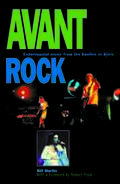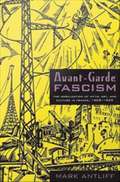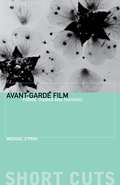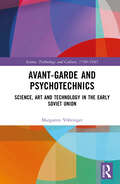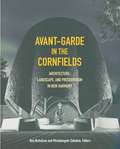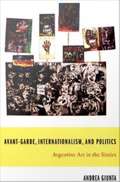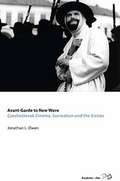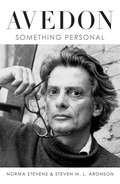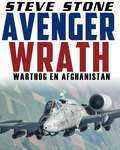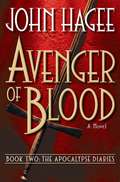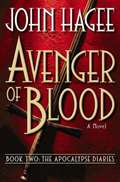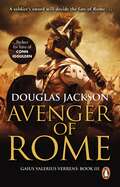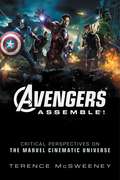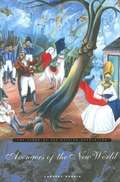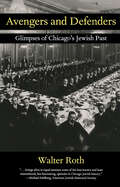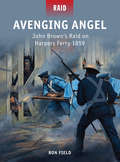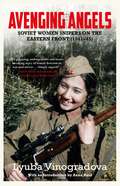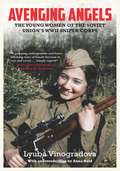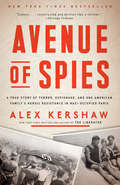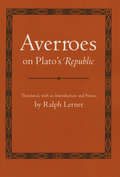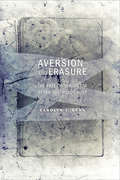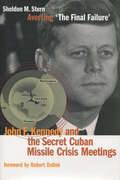- Table View
- List View
Avana, libro 2: La ricerca dei Maghi (Avana #2)
by Annie Lavigne✤ Così continuano le avventure di Avana ed Emroth sulla terra di Erin ✤ Emroth prosegue la ricerca dei quattro elementi. In qualità di Mago dell’acqua, spetta a lui trovare la Madre degli oceani. Ma sembra che gli manchi qualcosa affinché la Madre si riveli: potrebbe forse essere l’amore di una donna? Sulla terra di Erin è scesa una strana nebbia, che annerisce i cuori e le menti di druidi e cavalieri, spingendoli a uccidersi a vicenda. Avana compirà un viaggio fino in terra nemica, nel Connacht, per convincere la regina Maeve a unirsi agli Ulati, per combattere fianco a fianco le potenze delle Tenebre. Riusciranno i cavalieri di Conor e Maeve a dimenticare il passato e unire le forze contro gli eserciti di Zha’hor? Il disco dei quattro elementi deve essere riunito al più presto e Avana, legata alla magia dell’aria, raggiungerà gli elementalisti e ritroverà Emroth. Riusciranno i due a dare finalmente una possibilità al loro amore? Questo secondo volume trasporta il lettore in una ricerca iniziatica in cui i personaggi devono trasformarsi interiormente per vincere la propria Ombra e unirsi alla Luce. Si tratta di una prova individuale e collettiva, e ogni abitante dell’Isola Verde deve prestare attenzione alla propria interiorità, mentre un’oscura foschia invade ogni luogo. Da dove proviene questa nebbia? Di cosa si nutrono le Tenebre che gli Ulati temono così tanto? E come si può sconfiggere un nemico che ci è così vicino? Oltre a condurci in un universo fantasy in cui si uniscono con brio la mitologia celtica, la magia e l’amore, l’autrice ci fa vivere attraverso i personaggi un viaggio interiore che ci spinge a illuminare le nostre tenebre personali. Un romanzo che sa essere leggero e profondo allo stesso tempo, duro ma tenero, spaventoso ma ispiratore. Una buona scelta per adolescenti e giovani adulti che cercano una storia piena di azione e avventura, ma anc
Avant Rock
by Bill Martin Robert FrippIn Avant Rock,, music writer Bill Martin explores how avant-garde rock emerged from the social and political upheaval of the sixties. He covers the music from its early stages, revealing its influences outside of rock, from musicians such as John Cage and Cecil Taylor, to those more closely related to rock like James Brown and Parliament/ Funkadelic.Martin follows the development of avant rock through the sixties, when it was accepted into the mainstream, with bands like the later Beatles, The Who, Jimi Hendrix, The Velvet Underground, King Crimson, and Brian Eno. His narration takes us into the present, with an analysis of contemporary artists who continue to innovate and push the boundaries of rock, such as Stereolab, Mouse on Mars, Sonic Youth, and Jim O'Rourke. Martin critiques the work of all important avant rock bands and individual artists, from the well-known to the more obscure, and provides an annotated discography
Avant-Garde Art and Non-Dominant Thought in Postwar Japan: Image, Matter, Separation (Routledge Contemporary Japan Series)
by K. YoshidaThis book offers a reassessment of how "matter" – in the context of art history, criticism, and architecture – pursued a radical definition of "multiplicity", against the dominant and hierarchical tendencies underwriting post-fascist Japan. Through theoretical analysis of works by artists and critics such as Okamoto Taro, Hanada Kiyoteru, Kawara On, Isozaki Arata, Kawaguchi Tatsuo, and Nakahira Takuma, this highly illustrated text identifies formal oppositions frequently evoked in the Japanese avant-garde, between cognition and image, self and other, human and thing, and one and many, in mediums ranging from painting and photography, to sculpture and architecture. In addition to an "aesthetics of separation" which refuses the integrationist implications of the human, the author proposes the "anthropofugal" – meaning fleeing the human – as an original concept through which to understand matter in the epistemic universe of the postwar Japanese avant-garde. Chapters in this publication offer critical insights into how artists and critics grounded their work in active disengagement, to advance an ethics of nondominance. Avant-Garde Art and Nondominant Thought in Postwar Japan will appeal to students and scholars of Japanese studies, art history, and visual cultures more widely.
Avant-Garde Fascism: The Mobilization of Myth, Art, and Culture in France, 1909-1939
by Mark AntliffInvestigating the central role that theories of the visual arts and creativity played in the development of fascism in France, Mark Antliff examines the aesthetic dimension of fascist myth-making within the history of the avant-garde. Between 1909 and 1939, a surprising array of modernists were implicated in this project, including such well-known figures as the symbolist painter Maurice Denis, the architects Le Corbusier and Auguste Perret, the sculptors Charles Despiau and Aristide Maillol, the "New Vision" photographer Germaine Krull, and the fauve Maurice Vlaminck. Antliff considers three French fascists: Georges Valois, Philippe Lamour, and Thierry Maulnier, demonstrating how they appropriated the avant-garde aesthetics of cubism, futurism, surrealism, and the so-called Retour l'Ordre ("Return to Order"), and, in one instance, even defined the "dynamism" of fascist ideology in terms of Soviet filmmaker Sergei Eisenstein's theory of montage. For these fascists, modern art was the mythic harbinger of a regenerative revolution that would overthrow existing governmental institutions, inaugurate an anticapitalist new order, and awaken the creative and artistic potential of the fascist "new man. " In formulating the nexus of fascist ideology, aesthetics, and violence, Valois, Lamour, and Maulnier drew primarily on the writings of the French political theorist Georges Sorel, whose concept of revolutionary myth proved central to fascist theories of cultural and national regeneration in France. Antliff analyzes the impact of Sorel's theory of myth on Valois, Lamour, and Maulnier. Valois created the first fascist movement in France; Lamour, a follower of Valois, established the short-lived Parti Fasciste Rvolutionnaire in 1928 before founding two fascist-oriented journals; Maulnier forged a theory of fascism under the auspices of the journals Combat and Insurg.
Avant-Garde Film: Forms, Themes and Passions (Short Cuts)
by Michael O'PrayAvant-Garde Film: Forms, Themes and Passions examines the variety of concerns and practices that have comprised the long history of avant-garde film at a level appropriate for undergraduate study. It covers the developments of experimental film-making since the modernist explosion in the 1920s in Europe through to the Soviet film experiments, the American Underground cinema and the French New Wave, structuralism and contemporary gallery work of the young British artists. Through in-depth case-studies, the book introduces students not only to the history of the avant-garde but also to varied analytical approaches to the films themselves - ranging from abstraction (Richter, Ruttmann) to surreal visions (Bunuel, Wyn Evans), underground subversion (Jack Smith, Warhol) to experimental narrative (Deren and Antonioni).
Avant-Garde and Psychotechnics: Science, Art and Technology in the Early Soviet Union (Science, Technology and Culture, 1700-1945)
by Margarete VöhringerAvant-Garde and Psychotechnics presents an innovative look at the Russian avant-garde and its cultural encounters with the sciences in the 1920s. The book examines some of the lesser known entanglements between architects, filmmakers and philosophers, on the one hand, and experimental psychologists and physiologists on the other. In Russia, famous avant-garde artists, such as El Lissitzky, Vassily Kandinsky and Dziga Vertov, helped propagate a movement referred to as "psychotechnics" that was emerging at the time in Germany and the United States and eventually led to a "psychotechnical boom." At the end of the story told in the book, it becomes clear that this boom continues to the present day. By analyzing concrete projects undertaken by Russian artists and scientists in cooperation with one another, and by drawing on as-yet-unpublished archival material, Avant-Garde and Psychotechnics challenges the established notion of socialist sciences. At the same time, it provides an entirely new picture of what was thought to be modern art, thereby demonstrating that artistic experimentation had much more than a mere metaphorical meaning in Russian arts in the 1920s. In 2007 Avant-Garde and Psychotechnics was acknowledged with an award for interdisciplinary research by the Wilhelm-Ostwald-Society, Großbothen. In 2011 the book received funding from the VolkswagenStiftung to be translated into English and Russian (the Russian edition was published by NLO books in 2019). The original German edition also received favorable reviews in NZZ, NTM, Derive, Junge Welt and Sehepunkte.
Avant-Garde in the Cornfields: Architecture, Landscape, and Preservation in New Harmony
by Michelangelo Sabatino Ben NicholsonA close examination of an iconic small town that gives boundless insights into architecture, landscape, preservation, and philanthropyAvant-Garde in the Cornfields is an in-depth study of New Harmony, Indiana, a unique town in the American Midwest renowned as the site of two successive Utopian settlements during the nineteenth century: the Harmonists and the Owenites. During the Cold War years of the twentieth century, New Harmony became a spiritual &“living community&” and attracted a wide variety of creative artists and architects who left behind landmarks that are now world famous. This engrossing and well-documented book explores the architecture, topography, and preservation of New Harmony during both periods and addresses troubling questions about the origin, production, and meaning of the town&’s modern structures, landscapes, and gardens. It analyzes how these were preserved, recognizing the funding that has made New Harmony so vital, and details the elaborate ways in which the town remains an ongoing experiment in defining the role of patronage in historic preservation.An important reappraisal of postwar American architecture from a rural perspective, Avant-Garde in the Cornfields presents provocative ideas about how history is interpreted through design and historic preservation—and about how the extraordinary past and present of New Harmony continue to thrive today. Contributors: William R. Crout, Harvard U; Stephen Fox, Rice U; Christine Gorby, Pennsylvania State U; Cammie McAtee, Harvard U; Nancy Mangum McCaslin; Kenneth A. Schuette Jr., Purdue U; Ralph Schwarz; Paul Tillich.
Avant-Garde, Internationalism, and Politics: Argentine Art in the Sixties
by Andrea GiuntaThe 1960s were heady years in Argentina. Visual artists, curators, and critics sought to fuse art and politics; to broaden the definition of art to encompass happenings and assemblages; and, above all, to achieve international recognition for new, cutting-edge Argentine art. A bestseller in Argentina, Avant-Garde, Internationalism, and Politics is an examination of the 1960s as a brief historical moment when artists, institutions, and critics joined to promote an international identity for Argentina's visual arts. The renowned Argentine art historian and critic Andrea Giunta analyzes projects specifically designed to internationalize Argentina's art and avant-garde during the 1960s: the importation of exhibitions of contemporary international art, the sending of Argentine artists abroad to study, the organization of prize competitions involving prestigious international art critics, and the export of exhibitions of Argentine art to Europe and the United States. She looks at the conditions that made these projects possible--not least the Alliance for Progress, a U. S. program of "exchange" and "cooperation" meant to prevent the spread of communism through Latin America in the wake of the Cuban Revolution--as well as the strategies formulated to promote them. She describes the influence of Romero Brest, prominent art critic, supporter of abstract art, and director of the Centro de Artes Visuales del Instituto Tocuato Di Tella (an experimental art center in Buenos Aires); various group programs such as Nueva Figuracin and Arte Destructivo; and individual artists including Antonio Berni, Alberto Greco, Len Ferrari, Marta Minujin, and Luis Felipe No. Giunta's rich narrative illuminates the contentious postwar relationships between art and politics, Latin America and the United States, and local identity and global recognition.
Avant-garde To New Wave
by Jonathan L. OwenThe cultural liberalization of communist Czechoslovakia in the 1960s produced many artistic accomplishments, not least the celebrated films of the Czech New Wave. This movement saw filmmakers use their new freedom to engage with traditions of the avant-garde, especially Surrealism. This book explores the avant-garde's influence over the New Wave and considers the political implications of that influence. The close analysis of selected films, ranging from the Oscar-winning Closely Observed Trains to the aesthetically challenging Daisies, is contextualized by an account of the Czech avant-garde and a discussion of the films' immediate cultural and political background.
Avedon: Something Personal
by Steven M. Aronson Norma StevensAn intimate biography of Richard Avedon, the legendary fashion and portrait photographer who “helped define America’s image of style, beauty and culture” (The New York Times), by his longtime collaborator and business partner Norma Stevens and award-winning author Steven M. L. Aronson. Richard Avedon was arguably the world’s most famous photographer—as artistically influential as he was commercially successful. Over six richly productive decades, he created landmark advertising campaigns, iconic fashion photographs (as the star photographer for Harper’s Bazaar and then Vogue), groundbreaking books, and unforgettable portraits of everyone who was anyone. He also went on the road to find and photograph remarkable uncelebrated faces, with an eye toward constructing a grand composite picture of America. Avedon dazzled even his most dazzling subjects. He possessed a mystique so unique it was itself a kind of genius—everyone fell under his spell. But the Richard Avedon the world saw was perhaps his greatest creation: he relentlessly curated his reputation and controlled his image, managing to remain, for all his exposure, among the most private of celebrities. No one knew him better than did Norma Stevens, who for thirty years was his business partner and closest confidant. In Avedon: Something Personal—equal parts memoir, biography, and oral history, including an intimate portrait of the legendary Avedon studio—Stevens and co-author Steven M. L. Aronson masterfully trace Avedon’s life from his birth to his death, in 2004, at the age of eighty-one, while at work in Texas for The New Yorker (whose first-ever staff photographer he had become in 1992). The book contains startlingly candid reminiscences by Mike Nichols, Calvin Klein, Claude Picasso, Renata Adler, Brooke Shields, David Remnick, Naomi Campbell, Twyla Tharp, Jerry Hall, Mikhail Baryshnikov, Bruce Weber, Cindy Crawford, Donatella Versace, Jann Wenner, and Isabella Rossellini, among dozens of others. Avedon: Something Personal is the confiding, compelling full story of a man who for half a century was an enormous influence on both high and popular culture, on both fashion and art—to this day he remains the only artist to have had not one but two retrospectives at the Metropolitan Museum of Art during his lifetime. Not unlike Richard Avedon’s own defining portraits, the book delivers the person beneath the surface, with all his contradictions and complexities, and in all his touching humanity.
Avenger Wrath: Warthog en Afghanistan
by Steve StoneAvenger Wrath est l'histoire d'un Hog Driver et de sa chevauchée pendant la guerre en Afghanistan, opérant depuis la base aérienne de Bagram avec la magnifique chaîne de montagnes afghane, bien que mortelle, en toile de fond. L'A-10 a été utilisé presque constamment en Afghanistan, se révélant une fois de plus comme une plate-forme d'armes formidable et capable. Cette version révisée et mise à jour du livre est devenue plus poignante car le F-35 a la chance de prouver qu'il peut assumer le rôle des A-10. L'A-10 devrait rester en service au moins jusqu'en 2022, avec une prolongation de la durée de vie, peut-être jusqu'en 2040. Équipé du GAU-8 Avenger, un canon de 30 mm, conçu pour couper le blindage des chars, s'est avéré tout aussi efficace pour déchirer les épais murs de boue des complexes dans lesquels les talibans se réfugiaient souvent pour monter des embuscades sur les troupes de la coalition. Il a une capacité de survie comme aucun autre avion actuellement en opération et a ramené son pilote dans un état qui aurait causé l'écrasement d'autres avions. Suivez cette histoire à indice d'octane élevé basée sur des opérations réelles et obtenez un aperçu passionnant d'un avion incroyable.
Avenger of Blood
by John HageeIn Avengers of Blood the dramatic conflict between historic Christianity and ancient heresies parallels the resurgence of Gnostic and pagan beliefs in the late twentieth century under the guise of the New Age movement. the plot also deals with social issues--such a child abandonment, sanctioned by Roman law in a way that will touch the hearts of pro-life Christians today. As the story continues, released from his exile on Patmos, the apostle John sets out to deliver his apocalyptic writings to the seven churches of Asia. But the elderly apostle's protege, Jacob turns away from his call to the ministry in order to seek revenge on his family's persecutor. His sister Rebecca, must confront her feelings for the unbelieving lawyer hired to hand her late father's estate. Will she follow her heart or sacrifice love to follow God's will? Rebecca's illegitimate son, Victor, is destined to become a respected pastor who must battle enemies both inside and outside the church.
Avenger of Blood (The Apocalypse Diaries #2)
by John HageeThe dramatic conflict between historic Christianity and ancient heresies parallels the resurgence of Gnostic and pagan beliefs in the late twentieth century under the guise of the New Age movement. The plot also deals with social issues--such a child abandonment, sanctioned by Roman law in a way that will touch the hearts of pro-life Christians today. As the story continues, released from his exile on Patmos, the apostle John sets out to deliver his apocalyptic writings to the seven churches of Asia. But the elderly apostle's protege, Jacob turns away from his call to the ministry in order to seek revenge on his family's persecutor. His sister Rebecca must confront her feelings for the unbelieving lawyer hired to hand her late father's estate. Will she follow her heart or sacrifice love to follow God's will? Rebecca's illegitimate son, Victor, is destined to become a respected pastor who must battle enemies both inside and outside the church.
Avenger of Rome: (Gaius Valerius Verrens 3): a gripping and vivid Roman page-turner you won’t want to stop reading (Gaius Valerius Verrens #3)
by Douglas JacksonIf you like Simon Scarrow and Ben Kane, you'll absolutely love this enthralling and action-packed novel of Roman adventure from bestselling author Douglas Jackson. Readers are loving Gaius Valerius Verrens! "A triumph of a novel" - 5 STARS"Impossible to put down." - 5 STARS"A real unputdownable read" - 5 STARS"Spellbinding" - 5 STARS***************************************************************************************A SOLDIER'S SWORD WILL DECIDE THE FATE OF ROMEEmperor Nero's grip on power is weakening - more and more fearful of losing his position, his paranoia settles on the figure of the popular Gnaeus Domitius Corbulo, Rome's greatest General who leads the imperial legions in the East. Is he preparing to march against Rome?Gaius Valerius Verrens is ordered to Antioch on a mission to kill Corbulo, a soldier he worships...Yet Corbulo's eyes are not on Rome, but on a new threat to the Empire's border: the Parthian King, Vologases, is marching to war and with such an army that if not stopped he might overwhelm the entire Roman east.Valerius marches at Corbulo's side. Outnumbered they make a stand to meet Vologases in an epic contest of military might and ingenuity that will decide the fate of the Empire. And while he fights for the Empire, and for his own survival on the battlefield, Valerius must decide whether to complete his mission, or risk incurring his Emperor's dangerous wrath.Gaius Valerius Verrens's adventures continue in Sword of Rome.
Avengers Assemble!: Critical Perspectives on the Marvel Cinematic Universe
by Terence McSweeneyWe are living in the age of the superhero and we cannot deny it. <P><P>Avengers Assemble! is a vibrant and theoretically informed interrogation of one of the defining and most financially successful film franchises of the new millennium. In the first single-authored monograph on the topic of the Marvel cinematic universe, Terence McSweeney asks, "Why has the superhero genre reemerged so emphatically in recent years?" In an age where people have stopped going to the cinema as frequently as they used to, they returned to it in droves for the superhero film. What is it about these films that has resonated with audiences all around the globe? Are they just disposable pop culture artifacts or might they have something interesting to say about the fears and anxieties of the world we live in today? <P><P>Beginning with Iron Man in 2008, this study provocatively explores both the cinematic and the televisual branches of the series across ten dynamic and original chapters from a diverse range of critical perspectives which analyse their status as an embodiment of the changing industrial practices of the blockbuster film and their symbolic potency as affective cultural artifacts that are profoundly immersed in the turbulent political climate of their era.
Avengers Of The New World: The Story Of The Haitian Revolution
by Laurent DuboisThe first and only successful slave revolution in the Americas began in 1791 when thousands of brutally exploited slaves rose up against their masters on Saint-Domingue, the most profitable colony in the eighteenth-century Atlantic world. Within a few years, the slave insurgents forced the French administrators of the colony to emancipate them, a decision ratified by revolutionary Paris in 1794. This victory was a stunning challenge to the order of master/slave relations throughout the Americas, including the southern United States, reinforcing the most fervent hopes of slaves and the worst fears of masters. But, peace eluded Saint-Domingue as British and Spanish forces attacked the colony. A charismatic ex-slave named Toussaint Louverture came to Franceâe(tm)s aid, raising armies of others like himself and defeating the invaders. Ultimately Napoleon, fearing the enormous political power of Toussaint, sent a massive mission to crush him and subjugate the ex-slaves. After many battles, a decisive victory over the French secured the birth of Haiti and the permanent abolition of slavery from the land. The independence of Haiti reshaped the Atlantic world by leading to the French sale of Louisiana to the United States and the expansion of the Cuban sugar economy. Laurent Dubois weaves the stories of slaves, free people of African descent, wealthy whites, and French administrators into an unforgettable tale of insurrection, war, heroism, and victory. He establishes the Haitian Revolution as a foundational moment in the history of democracy and human rights.
Avengers and Defenders: Glimpses of Chicago's Jewish Past
by Walter Roth&“Meticulous research brings alive in equal measure some of the best-known and least remembered, but fascinating, episodes in Chicago Jewish history.&” —Michael Feldberg, Executive Director, American Jewish Historical Society Walter Roth delves deep into the archives of Chicago&’s Jewish past in this collection of illuminating essays. The presence of Jews in Chicago goes back to 1841 and, Roth, a scholar of Jewish history in the city, looks at the more colorful and little-known aspects of Jewish involvement in all aspects of city life. He reveals Jewish connections to such tragedies as the Haymarket affair, the Peoria Street Riots of November 1949, the Memorial Day Massacre of 1937, the Iroquois Theater fire, and the murder of Jake Lingle. He also explores the Jewish community&’s impact on business life, with discussions of Albert Lasker, the father of modern advertising, Ernest Byfield, founder of the Pump Room, William Paley, the head of CBS, Benjamin Rosenthal and the Chicago Mail Order Company, and the demise of the Foreman State Bank. There are sections on culture in the city (Meyer Levin and Isaac Rosenfeld), and science in the city (Leo Strauss, Martin D Kamen and Gunther Stent). These are only a sampling of the influential people and events Roth covers in this engaging collection. &“[Roth&’s] essays sparkle with gems that will interest scholars, researchers, and casual readers alike.&” —Mark A. Raider, Chair, Judaic Studies Dept., SUNY, Albany &“Readers . . . will find themselves enthralled by Walter Roth&’s indispensable exploration of the intriguing role that one talented minority played . . . in the evolution of one of the world&’s greatest cities.&” —Steven J. Whitfield, Max Richter Professor of American Civilization, Brandeis University
Avenging Angel-John Brown#s Raid on Harpers Ferry 1859
by Ron Field Johnny ShumateThe Harpers Ferry raid confirmed for many Southerners the existence of a widespread Northern plot against slavery. In fact, Brown had raised funds for his raid from Northern abolitionists. To arm the slaves, he ordered one thousand pikes from a Connecticut manufacturer. Letters to Governor Wise betrayed the mixed feelings people held for Brown. For some, he was simply insane and should not be hanged. For others, he was a martyr to the cause of abolition, and his quick trial and execution reflected the fear and arrogance of the Virginia slave-owning aristocracy. Many Northerners condemned Brown's actions but thought him right in his conviction that slavery had to end. John Brown's raid on Harpers Ferry and his subsequent execution further polarized North and South and made a solution of the slavery issue central to the national debate which ultimately led to Civil War in 1861.
Avenging Angels: Soviet women snipers on the Eastern front (1941–45)
by Lyuba Vinogradova"Lyuba Vinogradova is a historian with a writer's dramatic eye. By personally interviewing many of the Russian women who as teenagers during WW2 took up arms to defend the motherland, her story becomes undeniably poignant and powerful" MARTIN CRUZ SMITH, author of Gorky ParkThe girls came from every corner of the U.S.S.R. They were factory workers, domestic servants, teachers and clerks, and few were older than twenty. Though many had led hard lives before the war, nothing could have prepared them for the brutal facts of their new existence: with their country on its knees, and millions of its men already dead, grievously wounded or in captivity, from 1942 onwards thousands of Soviet women were trained as snipers.Thrown into the midst of some of the fiercest fighting of the Second World War they would soon learn what it was like to spend hour upon hour hunting German soldiers in the bleak expanses of no-man's-land; they would become familiar with the awful power that comes with taking another person's life; and in turn they would discover how it feels to see your closest friends torn away from you by an enemy shell or bullet.In a narrative that travels from the sinister catacombs beneath the Kerch Peninsula to Byelorussia's primeval forests and, finally, to the smoking ruins of the Third Reich, Lyuba Vinogradova recounts the untold stories of these brave young women. Drawing on diaries, letters and interviews with survivors, as well as previously unpublished material from the military archives, she offers a moving and unforgettable record of their experiences: the rigorous training, the squalid living quarters, the blood and chaos of the Eastern Front, and those moments of laughter and happiness that occasionally allowed the girls to forget, for a second or two, their horrifying circumstances. Avenging Angels is a masterful account of an all-too-often overlooked chapter of history, and an unparalleled account of these women's lives.Translated from the Russian by Arch Tait
Avenging Angels: Soviet women snipers on the Eastern front (1941–45)
by Lyuba Vinogradova"Lyuba Vinogradova is a historian with a writer's dramatic eye. By personally interviewing many of the Russian women who as teenagers during WW2 took up arms to defend the motherland, her story becomes undeniably poignant and powerful" MARTIN CRUZ SMITH, author of Gorky ParkThe girls came from every corner of the U.S.S.R. They were factory workers, domestic servants, teachers and clerks, and few were older than twenty. Though many had led hard lives before the war, nothing could have prepared them for the brutal facts of their new existence: with their country on its knees, and millions of its men already dead, grievously wounded or in captivity, from 1942 onwards thousands of Soviet women were trained as snipers.Thrown into the midst of some of the fiercest fighting of the Second World War they would soon learn what it was like to spend hour upon hour hunting German soldiers in the bleak expanses of no-man's-land; they would become familiar with the awful power that comes with taking another person's life; and in turn they would discover how it feels to see your closest friends torn away from you by an enemy shell or bullet.In a narrative that travels from the sinister catacombs beneath the Kerch Peninsula to Byelorussia's primeval forests and, finally, to the smoking ruins of the Third Reich, Lyuba Vinogradova recounts the untold stories of these brave young women. Drawing on diaries, letters and interviews with survivors, as well as previously unpublished material from the military archives, she offers a moving and unforgettable record of their experiences: the rigorous training, the squalid living quarters, the blood and chaos of the Eastern Front, and those moments of laughter and happiness that occasionally allowed the girls to forget, for a second or two, their horrifying circumstances. Avenging Angels is a masterful account of an all-too-often overlooked chapter of history, and an unparalleled account of these women's lives.Translated from the Russian by Arch Tait
Avenging Angels: Young Women Of The Soviet Union's Wwii Sniper Corps
by Lyuba VinogradovaBeginning in 1942, with the Eastern Front having claimed the lives of several million Soviet soldiers, Stalin's Red Army began drafting tens of thousands of women, most of them in their teens or early twenties, to defend against the Nazi invasion. Some volunteered, but most were given no choice, in particular about whether to become a sniper or to fill some other combat role.After a few months of brutal training, the female snipers were issued with high-powered rifles and sent to the front. Almost without exception, their first kill came as a great shock, and changed them forever. But as the number of kills grew, many snipers became addicted to their new profession, some to the point of becoming depressed if a "hunt" proved fruitless.Accounts from the veterans of the female sniper corps include vivid descriptions of the close bonds they formed with their fellow soldiers, but also the many hardships and deprivations they faced: days and days in a trench without enough food, water, or rest, their lives constantly at risk from the enemy and from the cold; burying their friends, most of them yet to leave their teenage years; or the frequent sexual harassment by male officers.Although many of these young women were killed, often on their first day of combat, the majority returned from the front, only to face the usual constellation of trials with which every war veteran is familiar. Some continued their studies, but most were forced to work, even as they also started families or struggled to adjust to life as single parents. Nearly all of them were still in their early twenties, and despite the physical and mental scars left by the war, they had no time for complaints as the Soviet Union rebuilt following the war.Drawing on original interviews, diaries, and previously unpublished archival material, historian Lyuba Vinogradova has produced an unparalleled quilt of first-person narratives about these women's lives. This fascinating document brings the realities and hardships faced by the Red Army's female sniper corps to life, shedding light on a little-known aspect of the Soviet Union's struggles against Hitler's war machine.
Avenue of Spies: A True Story of Terror, Espionage, and One American Family's Heroic Resistance in Nazi-Occupied Paris
by Alex KershawThe best-selling author of The Liberator brings to life the incredible true story of an American doctor in Paris, and his heroic espionage efforts during World War IIThe leafy Avenue Foch, one of the most exclusive residential streets in Nazi-occupied France, was Paris's hotbed of daring spies, murderous secret police, amoral informers, and Vichy collaborators. So when American physician Sumner Jackson, who lived with his wife and young son Phillip at Number 11, found himself drawn into the Liberation network of the French resistance, he knew the stakes were impossibly high. Just down the road at Number 31 was the "mad sadist" Theodor Dannecker, an Eichmann protégé charged with deporting French Jews to concentration camps. And Number 84 housed the Parisian headquarters of the Gestapo, run by the most effective spy hunter in Nazi Germany. From his office at the American Hospital, itself an epicenter of Allied and Axis intrigue, Jackson smuggled fallen Allied fighter pilots safely out of France, a job complicated by the hospital director's close ties to collaborationist Vichy. After witnessing the brutal round-up of his Jewish friends, Jackson invited Liberation to officially operate out of his home at Number 11--but the noose soon began to tighten. When his secret life was discovered by his Nazi neighbors, he and his family were forced to undertake a journey into the dark heart of the war-torn continent from which there was little chance of return.Drawing upon a wealth of primary source material and extensive interviews with Phillip Jackson, Alex Kershaw recreates the City of Light during its darkest days. The untold story of the Jackson family anchors the suspenseful narrative, and Kershaw dazzles readers with the vivid immediacy of the best spy thrillers. Awash with the tense atmosphere of World War II's Europe, Avenue of Spies introduces us to the brave doctor who risked everything to defy Hitler.From the Hardcover edition.
Averroes on Plato's "Republic"
by Averroes Ralph Lerner"In one fashion or another, the question with which this introduction begins is a question for every serious reader of Plato's Republic: Of what use is this philosophy to me? Averroes clearly finds that the Republic speaks to his own time and to his own situation. . . . Perhaps the greatest use he makes of the Republic is to understand better the shari'a itself. . . . It is fair to say that in deciding to paraphrase the Republic, Averroes is asserting that his world--the world defined and governed by the Koran--can profit from Plato's instruction."--from Ralph Lerner's IntroductionAn indispensable primary source in medieval political philosophy is presented here in a fully annotated translation of the celebrated discussion of the Republic by the twelfth-century Andalusian Muslim philosopher, Abu'l-Walid Muhammad Ibn Ahmad Ibn Rushd, also know by his his Latinized name, Averroes. This work played a major role in both the transmission and the adaptation of the Platonic tradition in the West. In a closely argued critical introduction, Ralph Lerner addresses several of the most important problems raised by the work.
Aversion and Erasure: The Fate of the Victim after the Holocaust
by Carolyn DeanIn Aversion and Erasure, Carolyn J. Dean offers a bold account of how the Holocaust's status as humanity's most terrible example of evil has shaped contemporary discourses about victims in the West. Popular and scholarly attention to the Holocaust has led some observers to conclude that a "surfeit of Jewish memory" is obscuring the suffering of other peoples. Dean explores the pervasive idea that suffering and trauma in the United States and Western Europe have become central to identity, with victims competing for recognition by displaying their collective wounds.She argues that this notion has never been examined systematically even though it now possesses the force of self-evidence. It developed in nascent form after World War II, when the near-annihilation of European Jewry began to transform patriotic mourning into a slogan of "Never Again": as the Holocaust demonstrated, all people might become victims because of their ethnicity, race, gender, or sexuality—because of who they are.The recent concept that suffering is central to identity and that Jewish suffering under Nazism is iconic of modern evil has dominated public discourse since the 1980s.Dean argues that we believe that the rational contestation of grievances in democratic societies is being replaced by the proclamation of injury and the desire to be a victim. Such dramatic and yet culturally powerful assertions, however, cast suspicion on victims and define their credibility in new ways that require analysis. Dean's latest book summons anyone concerned with human rights to recognize the impact of cultural ideals of "deserving" and "undeserving" victims on those who have suffered.
Averting 'The Final Failure': John F. Kennedy and the Secret Cuban Missile Crisis Meetings (Stanford Nuclear Age)
by Sheldon M. SternThe Cuban missile crisis was the most dangerous confrontation of the Cold War and the most perilous moment in human history. Sheldon M. Stern, longtime historian at the John F. Kennedy Library, here presents a comprehensive narrative account of the secret ExComm meetings, making the inside story of the missile crisis completely understandable to general readers for the first time. <P><P> The author's narrative version of these discussions is entirely new; it provides readers with a running commentary on the issues and options discussed and enables them, as never before, to follow specific themes and the role of individual participants. The narrative highlights key moments of stress, doubt, decision, and resolution―and even humor―and makes the meetings comprehensible both to readers who lived through the crisis and to those too young to remember the Cold War. Stern demonstrates that JFK, a seasoned Cold Warrior who bore some of the responsibility for precipitating the crisis, consistently steered policy makers away from an apocalyptic nuclear conflict, which he called, with stark eloquence, "the final failure."

